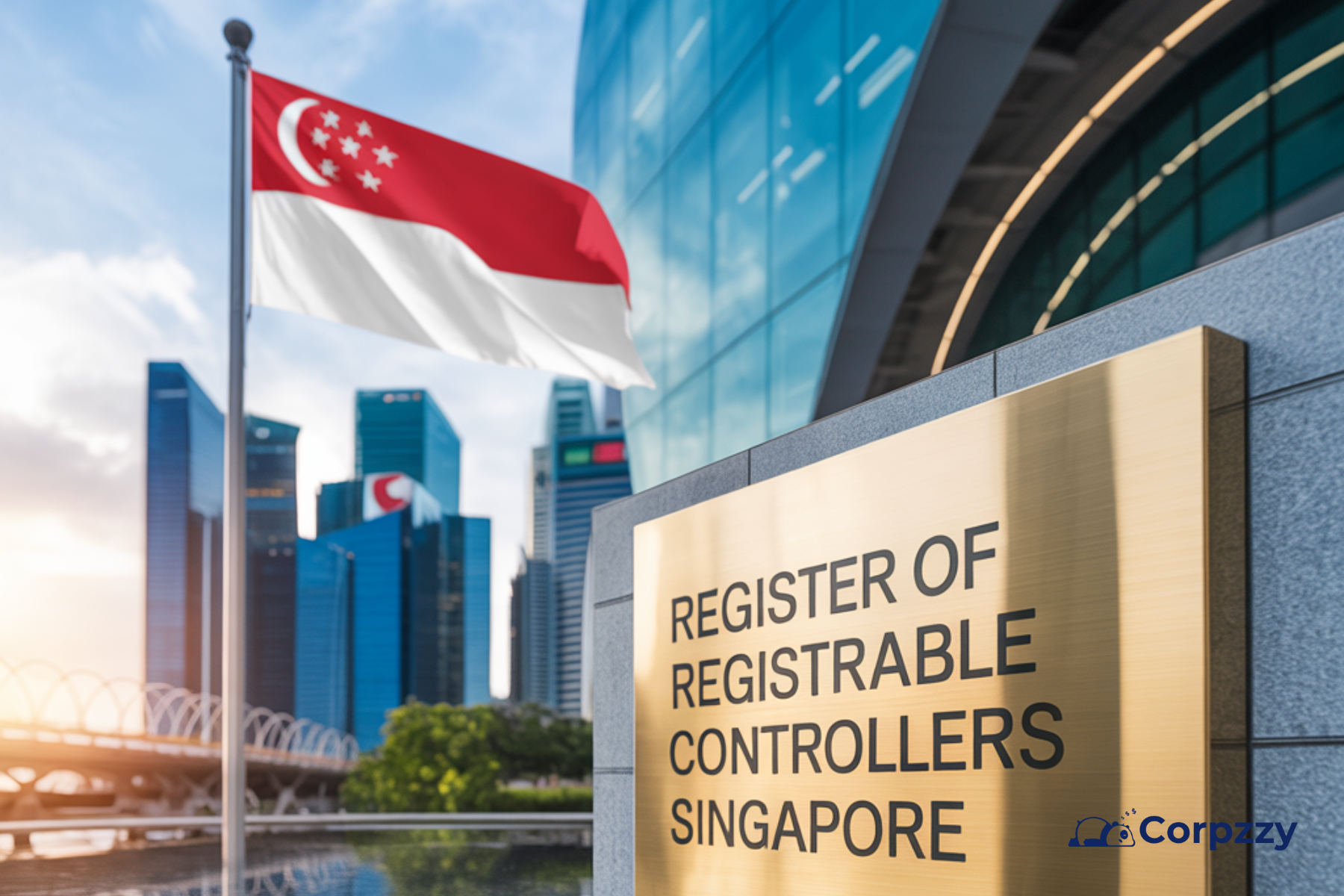The Future‑Ready Employee: Skills Employers Value and How AI Can Sharpen Them
The Future‑Ready Employee: Skills Employers Value and How AI Can Sharpen Them
Outline

In 2025, companies across Southeast Asia—including in Malaysia and Singapore—are seeking employees who blend critical human skills with AI fluency. Now that automation is reshaping daily operations, traits such as adaptability, problem-solving, communication, and digital literacy are increasingly essential. The most desired employees are those who can collaborate with AI to enhance strategic delivery. This article explores these valued skills and illustrates how AI tools can sharpen them through data-backed insights relevant to the region.
Drawing from credible global research and regional trends, this piece highlights the critical convergence of human capability and technology. It offers practical guidance for employees and organizations to align talent development with evolving business demands. The aim is to equip professionals with clarity and direction on how to become future-ready in an AI-enhanced workplace. These insights emphasize that AI complements—not replaces—human ingenuity.
The Growing Skills Disruption
Employers globally anticipate that approximately 39% of core job skills will change by 2030 due to emerging technologies, with AI driving rapid transformation in roles that depend on digital adeptness (World Economic Forum). Despite this shift, only about 10% of organizations qualify as truly AI “future-ready,” lacking structured strategies to upskill their workforce in time (Microsoft). In Southeast Asia, the mismatch is felt more acutely due to youth demographics and educational systems that emphasize theory over tech and practical skills. Digitally oriented positions are particularly vulnerable to disruption if training strategies are not updated.
In Malaysia and Singapore, companies report persistent gaps between graduates’ skill sets and industry requirements, even in sectors with substantial technical hiring (World Economic Forum). Many employees find themselves unprepared for AI-enhanced workflows and dynamic career paths. As new systems reduce labor-intensive tasks, employees lacking digital fluency become a drag on organizational productivity. To remain competitive, both individuals and firms must proactively adapt to evolving skill demands.
What Employers Value Most
Employers are placing high value on a mixture of technological capability, creative thinking, and emotional resilience, along with foundational skills like cybersecurity awareness and data literacy (World Economic Forum). Adaptability, communication, teamwork, and a lifelong learning orientation are also critical to navigating AI‑powered transformations. The combination of these “complementary” soft and human skills can command a salary premium of roughly 56% in many markets (PwC AI Jobs Barometer). Furthermore, roles influenced by AI are experiencing skill turnover 66% faster than others—highlighting the need for continual development.
Across Southeast Asia, employers increasingly emphasize real-world effectiveness over academic credentials alone. Candidates who demonstrate cross-functional agility and innovation in AI-supported environments are preferred. Workplaces are evolving—favoring candidates who can collaborate with AI tools to solve problems creatively rather than executing rote tasks. Those who can harness AI to generate actionable insights and improve outcomes will stand out in hiring and promotion workflows.
How AI Enhances Productivity and Creativity
AI tools like Microsoft Copilot, ChatGPT, and GitHub Co‑Pilot enable employees to complete routine tasks faster and focus on high-value work. Studies indicate these tools boost productivity by up to 66% in realistic settings, especially for knowledge workers (Nielsen Norman Group). Microsoft’s 2024 Work Trend Index found that 75% of respondents used AI daily, with 90% reporting time savings, 85% noting strategic refocusing, and 84% saying their creativity improved (Microsoft). In programming contexts, GitHub Co‑Pilot users finish coding tasks 55–60% faster (arXiv).
Such efficiency gains free up mental bandwidth for strategic thinking, innovation, and thoughtful decision-making. This shift allows professionals to spend more time leading projects, mentoring others, or developing creative solutions. Instead of being bogged down by administrative or repetitive duties, employees can use AI-generated insights to guide critical thinking. The result is a workplace where human and machine capabilities drive outcome-oriented performance.
How AI Enables Higher‑Value Work
By taking over repetitive chores—like draft creation, sorting data, and simple research—AI gives employees space for creative and strategic tasks. This empowers professionals to exercise judgment, leadership, and decision-making—capabilities machines have yet to replicate consistently (Microsoft Work Trend Index). Workers are shifting from reactive execution to proactive problem-solving, improving team performance. AI-driven tools help generate suggestions and insights that spark innovation rather than replace human creativity.
Exposure to AI in daily work environments fosters new skills that boost adaptability and self-awareness. When employees interact with AI for task management or data interpretation, they gain a deeper understanding of workflow optimization. This iterative feedback loop sharpens analytical thinking and helps employees anticipate what the next steps should be. Over time, generative AI becomes a tool for continuous professional growth.
Building AI‑Fluent Talent
Future-ready employees ideally cultivate both strong interpersonal skills—like communication, collaboration, and adaptability—and proficiency in working with AI tools. Regular use of generative AI to draft emails, summarize reports, or streamline coding complexities builds digital fluency. Participating in AI-supported microlearning, personalized coaching, and on-demand training helps reinforce this growth. Salesforce’s internal AI-driven career coaching model achieved high engagement (74%) and strong take-up of suggested training modules (Microsoft Work Trend Index).
For Southeast Asia professionals, these strategies are critical given the shifting job market and digital transformation mandates. Tailored learning pathways and AI-enabled skill diagnostics allow employees to target specific improvement areas. Career progression increasingly depends not only on past experience but on demonstrable adaptability in AI-augmented environments. Those who show they can both use AI tools and guide others to do so add exceptional value to employers.
Organizational Support Strategies
To cultivate future-ready talent, firms should implement personalized development plans based on skill diagnostics and AI-driven mapping tools. These initiatives help align employee strengths with business goals and future skill needs. Robust AI governance frameworks protect against misuse and reduce risks like data bias or burnout. Thoughtful policies ensure that AI adoption remains responsible and ethically grounded.
Encouraging experimentation through pilot projects allows employees to test tools in low-risk environments while learning what works best. Recognizing and rewarding contributions driven by AI fluency—whether via innovation or efficiency gains—builds sustained motivation. Leaders can create mentoring networks where AI-savvy employees help others adapt quickly. Combined, these strategies foster a learning culture essential for resilience.
Avoiding Overreach and Burnout
Even tools designed to save time can become burdens if used recklessly. Studies highlight that misuse or overreliance on AI can lead to lowered performance—by as much as 19 percentage points—and increased workplace stress (Harvard/MIT research referenced in Work Trend Index). Constant AI prompts and notifications can overwhelm employees if boundaries are not established. Over-automation may deskill professionals, diminishing their critical reasoning and creativity.
To mitigate these risks, organizations must preserve decision-making roles for humans and limit AI augmentation to support functions. Structured usage policies and regular reviews help balance efficiency with employee autonomy. Training sessions should include best practices for integrating AI meaningfully rather than indiscriminately. Ensuring employees maintain control over decisions helps uphold wellbeing and preserves cognitive skills.
The Job Market: Change Not Job Loss
While automation may displace certain routine positions, projections suggest a net creation of 170 million jobs by 2030, offsetting losses estimated at 92 million (WEF). New roles like “agent boss”—humans overseeing AI agents—are emerging as AI becomes a trusted collaborator. Employers increasingly prefer hiring adaptable, AI-capable talent over strictly credential-based applicants. This signals a shift toward roles that complement AI rather than compete with it.
In Southeast Asia, forward-thinking organizations are designing roles that evolve with AI capabilities. Candidates who can bridge human intelligence with AI‑supported tools are in high demand. Current talent development now focuses on continuous upskilling and flexibility across domains. This integrated approach ensures long-term employability and organizational adaptability.
Future‑Ready Skills in Southeast Asia
To maintain a competitive edge, companies in Malaysia and Singapore are prioritizing AI-readiness and cross-functional capability. Regional governments and educational institutions are introducing blended programs that match employer needs with practical skills development. Collaborative initiatives between academia and industry help reduce hiring mismatches and promote real-world preparedness. Employees who demonstrate AI literacy and soft skills gain a distinct advantage in dynamic, digital-first markets.
Organizations investing in personalized development—paired with AI governance and recognition systems—are fortifying their workforces. As global demand for adaptive and AI-savvy talent grows, such strategies become essential for competitiveness. Workers who can work alongside AI tools to improve outcomes are more likely to receive recognition and compensation. Firms and individuals aligned in this approach are building sustainable success in the AI-enhanced future.
Conclusion
In 2025, the most valued employees are those who combine human strengths—like creativity, judgment, and emotional intelligence—with AI fluency. Organizations increasingly seek professionals capable of using AI tools to enhance rather than replace human productivity. Individuals who embrace continuous learning, experiment with AI thoughtfully, and cultivate both soft and digital skills will remain future-ready. Firms that support this hybrid talent model while maintaining responsible governance will lead in performance, resilience, and innovation.
Sources
- World Economic Forum, Future of Jobs Report 2025 – Skills Outlook
- Microsoft & LinkedIn, Work Trend Index 2024: AI at Workplace
- PwC AI Jobs Barometer, AI‑related wage premiums and skill shifts
- Nielsen Norman Group, AI tools productivity study
- Microsoft Work Trend Index, findings on creativity and strategic refocus
- arXiv research, GitHub Co-Pilot developer productivity
- Financial Times / Harvard/MIT research summaries, on technostress and over‑use risks
Frequently Asked Questions
Questions? We Have Answers
About The Author
Related Business Articles
Share This Story, Choose Your Platform!


In 2025, companies across Southeast Asia—including in Malaysia and Singapore—are seeking employees who blend critical human skills with AI fluency. Now that automation is reshaping daily operations, traits such as adaptability, problem-solving, communication, and digital literacy are increasingly essential. The most desired employees are those who can collaborate with AI to enhance strategic delivery. This article explores these valued skills and illustrates how AI tools can sharpen them through data-backed insights relevant to the region.
Drawing from credible global research and regional trends, this piece highlights the critical convergence of human capability and technology. It offers practical guidance for employees and organizations to align talent development with evolving business demands. The aim is to equip professionals with clarity and direction on how to become future-ready in an AI-enhanced workplace. These insights emphasize that AI complements—not replaces—human ingenuity.
The Growing Skills Disruption
Employers globally anticipate that approximately 39% of core job skills will change by 2030 due to emerging technologies, with AI driving rapid transformation in roles that depend on digital adeptness (World Economic Forum). Despite this shift, only about 10% of organizations qualify as truly AI “future-ready,” lacking structured strategies to upskill their workforce in time (Microsoft). In Southeast Asia, the mismatch is felt more acutely due to youth demographics and educational systems that emphasize theory over tech and practical skills. Digitally oriented positions are particularly vulnerable to disruption if training strategies are not updated.
In Malaysia and Singapore, companies report persistent gaps between graduates’ skill sets and industry requirements, even in sectors with substantial technical hiring (World Economic Forum). Many employees find themselves unprepared for AI-enhanced workflows and dynamic career paths. As new systems reduce labor-intensive tasks, employees lacking digital fluency become a drag on organizational productivity. To remain competitive, both individuals and firms must proactively adapt to evolving skill demands.
What Employers Value Most
Employers are placing high value on a mixture of technological capability, creative thinking, and emotional resilience, along with foundational skills like cybersecurity awareness and data literacy (World Economic Forum). Adaptability, communication, teamwork, and a lifelong learning orientation are also critical to navigating AI‑powered transformations. The combination of these “complementary” soft and human skills can command a salary premium of roughly 56% in many markets (PwC AI Jobs Barometer). Furthermore, roles influenced by AI are experiencing skill turnover 66% faster than others—highlighting the need for continual development.
Across Southeast Asia, employers increasingly emphasize real-world effectiveness over academic credentials alone. Candidates who demonstrate cross-functional agility and innovation in AI-supported environments are preferred. Workplaces are evolving—favoring candidates who can collaborate with AI tools to solve problems creatively rather than executing rote tasks. Those who can harness AI to generate actionable insights and improve outcomes will stand out in hiring and promotion workflows.
How AI Enhances Productivity and Creativity
AI tools like Microsoft Copilot, ChatGPT, and GitHub Co‑Pilot enable employees to complete routine tasks faster and focus on high-value work. Studies indicate these tools boost productivity by up to 66% in realistic settings, especially for knowledge workers (Nielsen Norman Group). Microsoft’s 2024 Work Trend Index found that 75% of respondents used AI daily, with 90% reporting time savings, 85% noting strategic refocusing, and 84% saying their creativity improved (Microsoft). In programming contexts, GitHub Co‑Pilot users finish coding tasks 55–60% faster (arXiv).
Such efficiency gains free up mental bandwidth for strategic thinking, innovation, and thoughtful decision-making. This shift allows professionals to spend more time leading projects, mentoring others, or developing creative solutions. Instead of being bogged down by administrative or repetitive duties, employees can use AI-generated insights to guide critical thinking. The result is a workplace where human and machine capabilities drive outcome-oriented performance.
How AI Enables Higher‑Value Work
By taking over repetitive chores—like draft creation, sorting data, and simple research—AI gives employees space for creative and strategic tasks. This empowers professionals to exercise judgment, leadership, and decision-making—capabilities machines have yet to replicate consistently (Microsoft Work Trend Index). Workers are shifting from reactive execution to proactive problem-solving, improving team performance. AI-driven tools help generate suggestions and insights that spark innovation rather than replace human creativity.
Exposure to AI in daily work environments fosters new skills that boost adaptability and self-awareness. When employees interact with AI for task management or data interpretation, they gain a deeper understanding of workflow optimization. This iterative feedback loop sharpens analytical thinking and helps employees anticipate what the next steps should be. Over time, generative AI becomes a tool for continuous professional growth.
Building AI‑Fluent Talent
Future-ready employees ideally cultivate both strong interpersonal skills—like communication, collaboration, and adaptability—and proficiency in working with AI tools. Regular use of generative AI to draft emails, summarize reports, or streamline coding complexities builds digital fluency. Participating in AI-supported microlearning, personalized coaching, and on-demand training helps reinforce this growth. Salesforce’s internal AI-driven career coaching model achieved high engagement (74%) and strong take-up of suggested training modules (Microsoft Work Trend Index).
For Southeast Asia professionals, these strategies are critical given the shifting job market and digital transformation mandates. Tailored learning pathways and AI-enabled skill diagnostics allow employees to target specific improvement areas. Career progression increasingly depends not only on past experience but on demonstrable adaptability in AI-augmented environments. Those who show they can both use AI tools and guide others to do so add exceptional value to employers.
Organizational Support Strategies
To cultivate future-ready talent, firms should implement personalized development plans based on skill diagnostics and AI-driven mapping tools. These initiatives help align employee strengths with business goals and future skill needs. Robust AI governance frameworks protect against misuse and reduce risks like data bias or burnout. Thoughtful policies ensure that AI adoption remains responsible and ethically grounded.
Encouraging experimentation through pilot projects allows employees to test tools in low-risk environments while learning what works best. Recognizing and rewarding contributions driven by AI fluency—whether via innovation or efficiency gains—builds sustained motivation. Leaders can create mentoring networks where AI-savvy employees help others adapt quickly. Combined, these strategies foster a learning culture essential for resilience.
Avoiding Overreach and Burnout
Even tools designed to save time can become burdens if used recklessly. Studies highlight that misuse or overreliance on AI can lead to lowered performance—by as much as 19 percentage points—and increased workplace stress (Harvard/MIT research referenced in Work Trend Index). Constant AI prompts and notifications can overwhelm employees if boundaries are not established. Over-automation may deskill professionals, diminishing their critical reasoning and creativity.
To mitigate these risks, organizations must preserve decision-making roles for humans and limit AI augmentation to support functions. Structured usage policies and regular reviews help balance efficiency with employee autonomy. Training sessions should include best practices for integrating AI meaningfully rather than indiscriminately. Ensuring employees maintain control over decisions helps uphold wellbeing and preserves cognitive skills.
The Job Market: Change Not Job Loss
While automation may displace certain routine positions, projections suggest a net creation of 170 million jobs by 2030, offsetting losses estimated at 92 million (WEF). New roles like “agent boss”—humans overseeing AI agents—are emerging as AI becomes a trusted collaborator. Employers increasingly prefer hiring adaptable, AI-capable talent over strictly credential-based applicants. This signals a shift toward roles that complement AI rather than compete with it.
In Southeast Asia, forward-thinking organizations are designing roles that evolve with AI capabilities. Candidates who can bridge human intelligence with AI‑supported tools are in high demand. Current talent development now focuses on continuous upskilling and flexibility across domains. This integrated approach ensures long-term employability and organizational adaptability.
Future‑Ready Skills in Southeast Asia
To maintain a competitive edge, companies in Malaysia and Singapore are prioritizing AI-readiness and cross-functional capability. Regional governments and educational institutions are introducing blended programs that match employer needs with practical skills development. Collaborative initiatives between academia and industry help reduce hiring mismatches and promote real-world preparedness. Employees who demonstrate AI literacy and soft skills gain a distinct advantage in dynamic, digital-first markets.
Organizations investing in personalized development—paired with AI governance and recognition systems—are fortifying their workforces. As global demand for adaptive and AI-savvy talent grows, such strategies become essential for competitiveness. Workers who can work alongside AI tools to improve outcomes are more likely to receive recognition and compensation. Firms and individuals aligned in this approach are building sustainable success in the AI-enhanced future.
Conclusion
In 2025, the most valued employees are those who combine human strengths—like creativity, judgment, and emotional intelligence—with AI fluency. Organizations increasingly seek professionals capable of using AI tools to enhance rather than replace human productivity. Individuals who embrace continuous learning, experiment with AI thoughtfully, and cultivate both soft and digital skills will remain future-ready. Firms that support this hybrid talent model while maintaining responsible governance will lead in performance, resilience, and innovation.
Sources
- World Economic Forum, Future of Jobs Report 2025 – Skills Outlook
- Microsoft & LinkedIn, Work Trend Index 2024: AI at Workplace
- PwC AI Jobs Barometer, AI‑related wage premiums and skill shifts
- Nielsen Norman Group, AI tools productivity study
- Microsoft Work Trend Index, findings on creativity and strategic refocus
- arXiv research, GitHub Co-Pilot developer productivity
- Financial Times / Harvard/MIT research summaries, on technostress and over‑use risks
Frequently Asked Questions
Questions? We Have Answers
Share This Story, Choose Your Platform!




